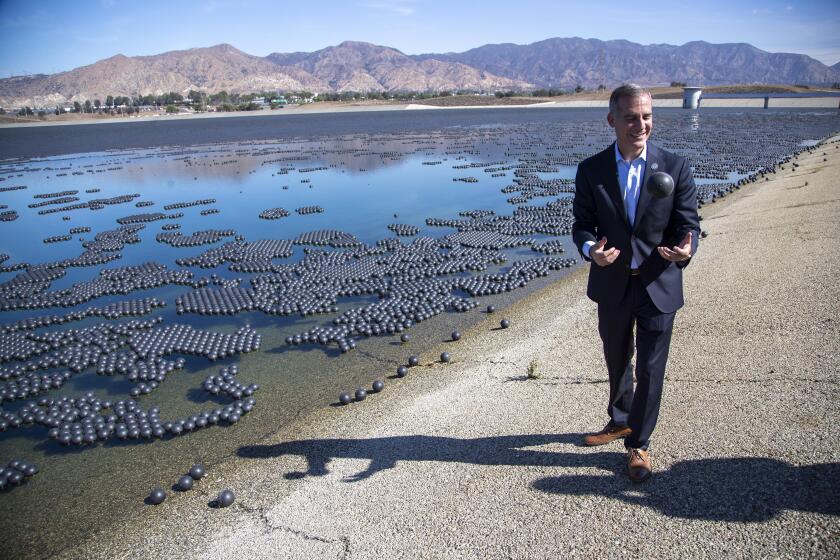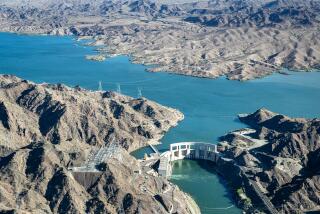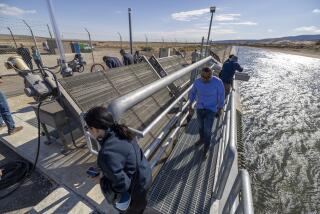Column: Up to 1 million gallons of water ... a night? That’s par for some desert golf courses
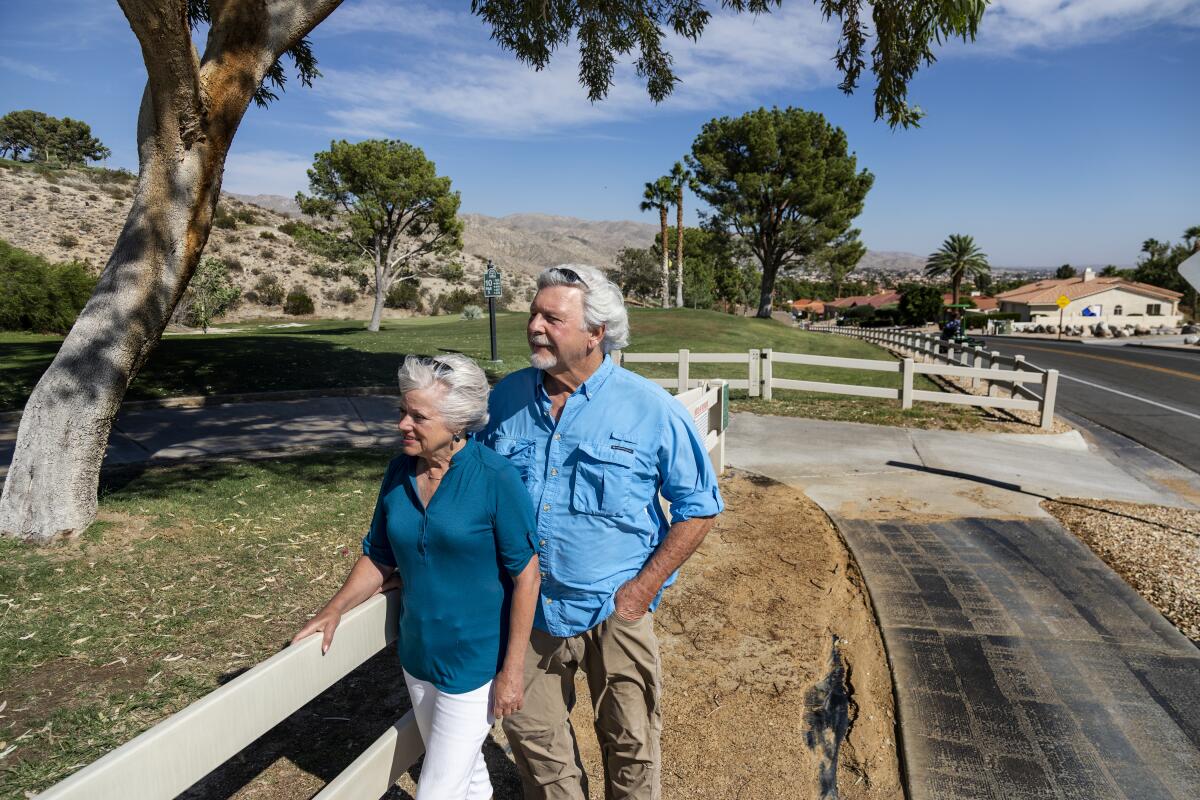
Doug Thompson couldn’t believe what he’d just been told. His wife, a botanist, was advising a Coachella Valley country club on drought-resistant landscaping, and Thompson, who got to talking with the groundskeeper, asked how much water it takes to irrigate a golf course.
“He proudly said they had just computerized their system and they were down to 1.2 million gallons a night,” recalls Thompson, an ecologist who leads natural history expeditions. “I thought I didn’t hear him correctly, so about 30 minutes later I asked again, and he said the same thing.”
That conversation took place a few years ago. But in the midst of a prolonged drought that has prompted a first-ever federal declaration of a water shortage in the Colorado River Basin and brought calls for greater conservation throughout California, Thompson and his wife, Robin Kobaly, became more keenly aware of all the lush green golf courses set against the parched landscape of the Coachella Valley.
How many golf courses?
About 120, many of them shoulder to shoulder across the desert floor, complete with decorative ponds, fountains and streams. It’s one of the highest concentrations of golf courses in the world.
L.A. will use more Colorado River water to reduce reliance on the hard-hit supplies from the State Water Project.
“From the homework we have done ... the smaller courses use at least several hundred thousand gallons a night, but the larger courses are in the 1-million-gallon range or more,” Thompson said.
“It’s not only an outrage,” he added, “but many months of the year, it’s too hot to play golf in the desert, yet the watering continues.”
When I met with Thompson and Kobaly in the desert, they told me they’re not trying to shut down the golf industry, and I’m with them on that. There’d be no Palm Springs without golf, just as there would have been no Rat Pack without Sinatra. The industry employs several thousand people, drawing hordes of snowbirds and pumping as much as $1 billion into the local economy.
But the planet now spins on a rotisserie, roasted and toasted in ways that are transforming landscapes and forcing us to adapt. Thompson and Kobaly wonder why golf courses aren’t doing more to conserve.
“This water crisis is huge,” Thompson said. “They’ll ask us to do things like don’t leave the water running when you brush your teeth, and it’s illegal to wash your car unless you turn off the valve on the hose. That might save 10 gallons of water, and meanwhile a million gallons a night are being used on every golf course in the Coachella Valley.”
When I put these observations to Craig Kessler, director of governmental affairs for the Southern California Golf Assn., he was more than happy to respond, as well as to share his considerable knowledge of state water policy.
And he threw me a curve.
Kessler said Coachella Valley golf courses are in much better shape in terms of water supplies than golf courses in California’s wetter climates. That’s because the desert, which had less than an inch of rain in the last season, has much more water to draw from, including a vast aquifer that sits beneath the desert floor.
“It’s complicated and counterintuitive,” Kessler said, but many coastal golf courses that rely on the state’s melted snowpack and rain have been harder hit by the drought than those in the desert.
The Coachella Valley Water District (CVWD), which serves 105 of the golf courses, draws from the California Water Project, the Colorado River and the aquifer. Kessler, who heads up the Coachella Valley Golf and Water Task Force, said much of the water used to irrigate golf courses is non-potable.
And yet, those 120 golf courses do indeed use massive amounts of precious, increasingly scarce water. Kessler said the valley has less than 1% of Southern California’s population, but 28.6% of its golf courses. Golf, he said, consumes less than 1% of all water used in California, but nearly 25% of Coachella Valley water.
So what are they doing about it? A lot, Kessler said, and the conservation effort goes back several years. Golf courses have been removing turf, narrowing fairways, installing more sophisticated irrigation systems, researching less thirsty grasses and scaling back on the practice of “overseeding,” which has kept courses green in winter months, when Bermuda grass goes dormant.
Jim Schmid, director of operations at Palm Desert’s Lakes Country Club, told me he has a weather station on site to help manage and reduce irrigation. And much of the water he uses, Schmidt said, is recycled water the “district needs to get rid of because they haven’t treated it to a standard where it can be used for potable purposes.”
Josh Tanner, general manager of Ironwood Country Club in Palm Desert, said Ironwood pumps its water out of the ground and pays a fee to the water agency to replenish the aquifer with imported water. The club has reduced its water consumption by 20% in recent years, Tanner said, largely by replacing turf with native landscaping.
But it doesn’t appear that every golf course is pulling its weight. And the CVWD, as Doug Thompson told me, doesn’t provide data on water use by individual golf courses. When I asked why, Katie Evans, CVWD’s director of communications and conservation, told me the district does not share information about individual customers. In fact, the water agency was sued for release of the information, but prevailed in court.
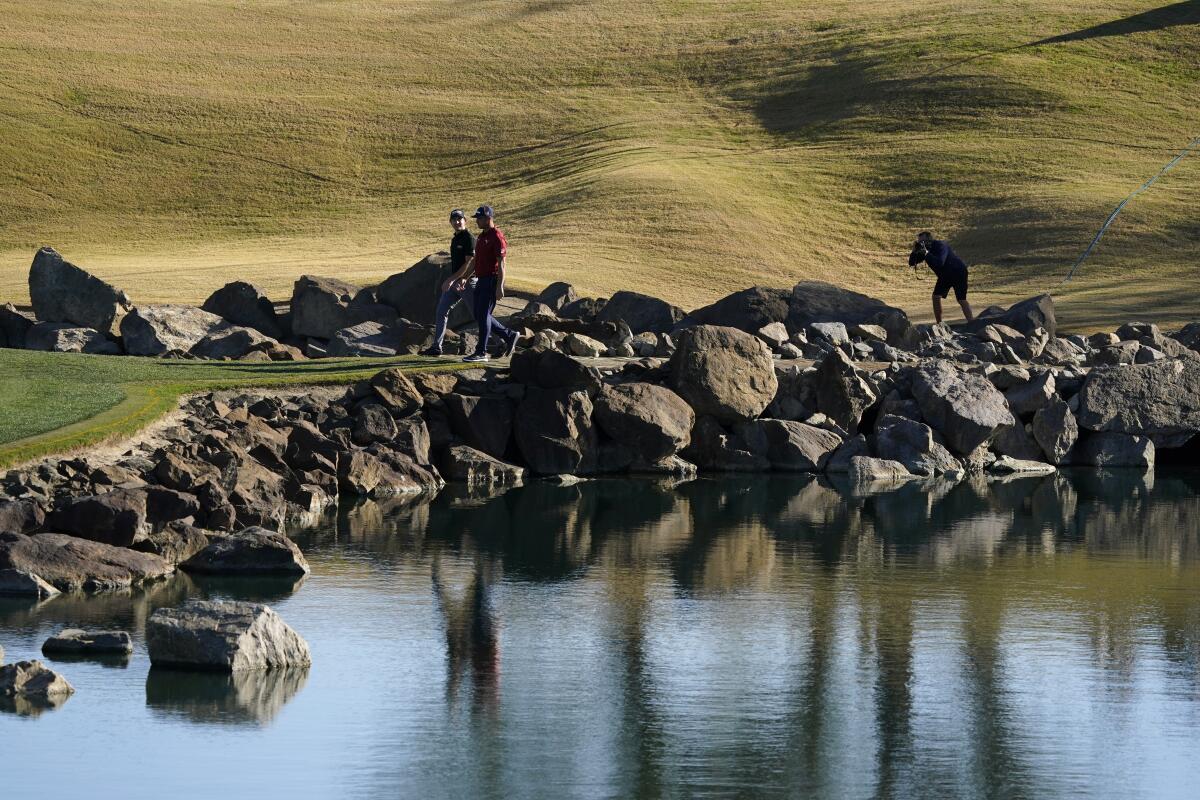
The Desert Sun reported in 2018 that the golf industry had not met its own goal — set in 2014 — of reducing water use by 10% below 2010 levels. Kessler told me that golf courses used 9% less water in 2020 than in 2013 when using a complicated calculation that takes evaporation into account, but just 5.6% less in total volume.
In the Coachella Valley, years of growth severely depleted the aquifer, just as agricultural irrigation has drained Central Valley water tables to the point where the ground is sinking. Gov. Jerry Brown signed legislation in 2014 requiring communities to develop groundwater sustainability strategies, and the CVWD has touted its progress in stabilizing and increasing underground water levels.
But that’s partly because the valley is able to recharge the aquifer with water from the Colorado River and the water pumped down from Northern California. However, current allotments won’t last if drought trend lines continue and water wars escalate.
One of Thompson and Kobaly’s pet peeves is that residential water bills are based on a tiered pricing system that encourages conservation, but golf and agriculture pay flat rates.
They have an ally in Mark Johnson, former director of engineering for the CVWD and a frequent critic of the agency. The retired Johnson said residential users have conserved far more than agriculture, which uses roughly half the district’s water, and significantly more than the golf industry, which uses short of 25%.
“Absolutely, there is an inequity,” said Johnson, and that, in effect, residential users “subsidize the infrastructure used to get water to golf courses.” Johnson, a golfer, said he used to play at a La Quinta course where “they were irrigating areas that weren’t even in play,” and watering sand traps, as well.
So why not institute tiered pricing for golf and ag, same as for residential users?
Read all of our coverage about how California is neglecting the climate threat posed by extreme heat.
The CVWD’s Evans said such pricing is prohibited by the state water code, but it might be possible to implement “a different pricing structure” in the future.
I’ll be watching to see how that goes, but it’s worth noting that three of the five members of the agency’s board of directors are in the agriculture industry. Water and oil don’t mix, but in California, water and politics always do.
“I agree that more can be done to conserve,” Evans said. “At this time, we are pushing out new conservation advertisements and continuing to offer a broad range of programs. … To be sustainable, we need to be water wise.”
Kessler, despite defending golf’s record on conservation, said that if drought and higher temperatures continue, maintaining the recent rate of conservation “won’t be enough moving 10-25 years forward.”
Unless it starts raining again like it used to, everyone in California is going to have to get by with less water in the very near future, not 10 or 25 years down the road.
Thompson and Kobaly, who aren’t golfers, have a suggestion. They’ve been looking into links-style golf courses, which are common in other countries and use far less water. You tee off on a patch of green and you putt on a patch of green, but most of the area in between is natural and not irrigated.
“I’ve got nothing against golf,” Thompson said. “But they’ve got to find a different way of doing it.”
steve.lopez@latimes.com
More to Read
Start your day right
Sign up for Essential California for news, features and recommendations from the L.A. Times and beyond in your inbox six days a week.
You may occasionally receive promotional content from the Los Angeles Times.

